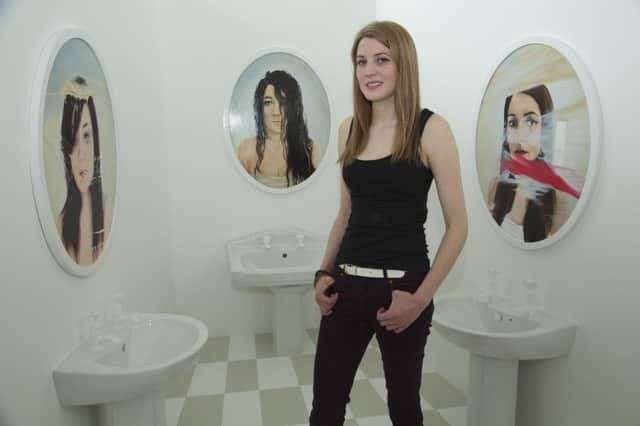Art review: Art, Design & Architecture Degree Show 2015, Dundee


Art, Design & Architecture Degree Show 2015 - Duncan Of Jordanstone College Of Art And Design, Dundee
Megan Falconer’s silver vessels may not have appeared particularly unique in shape but their patina and pockmarked surfaces were somewhat unusual. For Falconer has made her own tools by collecting stones from the Perthshire countryside, casting them in bronze and fashioning her own handmade hammers that are both utilitarian objects and precious artworks in themselves. Her finished bowls, bearing the raw marks of imperfection, present a perfect loop between process and product, subject and object.
Advertisement
Hide AdThere is a lot of pressure on students at degree show time, and this has been scarily amplified by the rounds of prizes and opportunities up for grabs. At degree shows, it’s unreasonable to expect the finished article. What you are looking for is the sense that a student has created their own toolkit: a way of thinking, making or doing that will carry them through. At the next, tough stage of leaky studios and zero hours contracts which they will encounter as young artists trying to get by, these are the tools that will help them survive.
Luckily, many of the young artists graduating in Dundee seem to have the necessary fire in their belly. Eilidh Wilson for example, in a presentation dedicated to protest, agit-prop and civil disobedience, has made an elegant working sculpture of rope and fence-posts which demonstrates that, with shared endeavour and joint leverage, people can move mountains, or at least tear down the barriers that surround them.
For KM Yasmin Fong the nature of protest acquires an immediacy and urgency in the context of the Umbrella Movement for universal suffrage in Hong Kong. She takes, as a central metaphor, the story of “the girl with the chalk crayons” a 14 year-old arrested for drawing the umbrella symbol on a wall in public.
Fong has created a children’s colouring book, its line drawings and simple format at odds with its imagery of protest and suppression. On the wall a sequence of Chinese newspapers has been subtly over-engraved with the imagery of the movement; imprinting a story where media censorship insists there is none. Nearby, a row of damaged umbrellas, cast in plaster and coloured bright yellow, attest both to the movement’s vulnerability and its persistence against the odds.
Amongst these riotous shows there are quiet moments that stand out. In a darkened booth I wore a headset for an EEG scan, activating a sequence of red lights every time my brain activity reached a pre-ordained level of concentration. Experienced meditators would probably blow the circuits. My scattershot mind barely made an impact.
The work is part of a crisply conceived series of works by Meadhbh McNutt whose art uses simple techniques to reveal or illustrate neurological processes. A before and after sequence of large photographs show the artist using patterns of brain activity to set off a homemade detonator and a roman candle. Another reveals the visible signs of similar explosions: a woman before and after childbirth, a fencer before and after sport and a young man before and after an exertion of a more personal nature.
Advertisement
Hide AdSometimes what you see in a student is a strong sense of self. Guy Titterington, for example has produced a show of such confidence and competence it’s hard to believe he is at the start of his career. His work includes witty sculptures of industrial pallets made exquisitely from fine veneers and minimal prints that look like blank walls studded with rawl plugs.
Similarly Lotte Fisher’s humorous miniature world built from AstroTurf and lollipop sticks, which has won her a residency at the Scottish Sculpture Workshop, is an assured debut that recalls both David Shrigley and Spike Milligan.
Advertisement
Hide AdIn Time-Based Arts I was impressed by the multi-layered work of Joe Coghill, whose archive of an invented New York no wave musician called John Margotti satirised the way institutions seek artists to be part of their created canon and our contradictory impulse to search out and canonise the cultish and the unknown.
Most impressive, too, is the joint work of Deborah Chapman and Mark McGreehin. Their skills are evident, but it’s the application of those skills that count. They have been working with children and families affected by ADHD, making a short film in which they talk about the toll of living with the condition and its impact on daily life. We hear real voices, but the participants are enabled and protected by the use of puppets rather than talking heads. These artists not only have the basic tools, their abilities in video and toy-making, but their efforts to work with other in challenging circumstances shows they are ready to share them.
Until 31.05.15